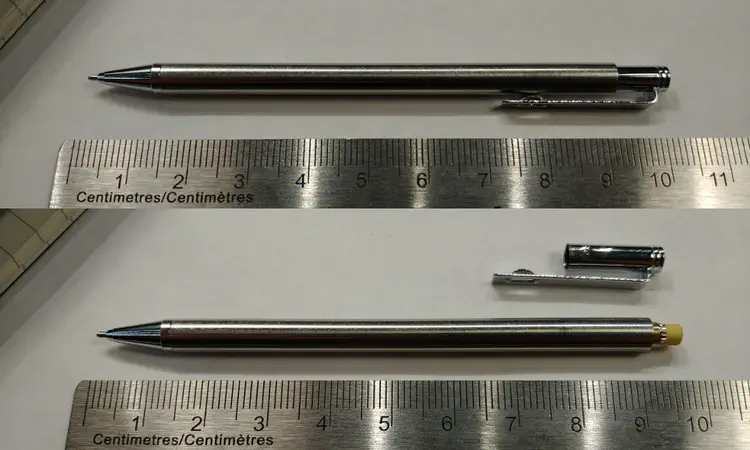Capture notebook
My organization systems
This page is part of a series on journaling.
Introduction
The capture notebook is a little notebook that I carry with me everywhere.
How ideas work
Ideas have the following characteristics:
- They emerge in consciousness randomly, in a context and at a time where they are not directly relevant.
- They have a half-life of about 30 to 60 seconds.
- Good ideas are rare. Genius ideas are few in a lifetime. One must generate many trivial ideas to have a few good ideas and a genius one.
- Capturing ideas is an exercise that stimulates additional ideas.
This is why it is important to always carry a capture notebook.
Material
This mechanical pencil is available at Nota Bene and Stylo.ca in Montreal.
The Moleskine notebook (Amazon.ca) is sold in packs of three. It survives over a year in the back pocket of my jeans.
Benefits
David Allan wrote two chapters on capturing in his book Getting Things Done.
- Chapter 5, Collection: Corralling Your “Stuff”
- Chapter 11, The Power of the Collection Habit
The promises that we make to ourselves and others represent a real physical and psychological weight. When we miss promises, we identify a little more with failure and negligence. We end up thinking that this is just the way we are. Missed promises and undone tasks come to our attention at random times and in unrelated contexts. This usually generates negative emotional experiences.
The first part of the solution is to capture all promises made, ideas, engagements, tasks and notes. This tricks the brain into letting go of those thoughts, as though the actions have been completed. This only works if you have a reliable and airtight system to organize, plan and act. See the GTD stack for more information on that second part.
Process
- Always carry a capture notebook.
- It must be ready to write in 30-60 seconds.
- Review it regularly to extract and organize usable information.
- Captured notes are raw material, not well articulated or organized.
- You must refine and categorize the content in other parts of the system (see GTD stack).
- What to note in your capture notebook:
- The name of a person I just met.
- Interesting places to go back to.
- Ideas.
- To do tasks.
- Temporary access codes.
- A shop’s business hours.
- Itineraries.
Digital or paper
There are numerous note taking application for phones and computers. I prefer my paper notebook.
Advantages of the paper notebook:
- Faster to open than an app.
- No battery management.
- Always working, no bugs, no software updates.
- You can remove a page to give a note to someone.
- No style constraints. You can write or draw.
- Doesn’t rely on telecom companies or cloud hosted services.
Digital note taking examples:
- Google Keep
- Noteself
- Evernote
- Voice recorder
- Emailing to self

